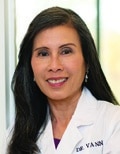
More Dental Health Articles
The Comprehensive Exam: The What and Why
Most dental care is delivered in response to something that has happened. It may be a toothache, the breaking of a tooth, an infection, or something with the bite. Over time, the mouth begins to look like a painting done by different painters, almost like a house that is remodeled one wall at a time over 25 years by different contractors who never had a plan. There is a need to step back and reassess the status quo.
We do that via a complete comprehensive examination. The exam consists of three distinct parts: the interview, the co-discovery exam, and the review-of-findings visit.
The Interview is often done in a non-clinical room, away from the “dental setting” when possible. It is the chance for patients to share what their dental history has been like. It gives them the opportunity to explain their concerns and to express their deepest feelings about their mouths. A very important question is “What do I want for my mouth over the next 10, 20, 30 or more years?”
Medical history is then reviewed and discussed. Also during this time, the dentist gets to share his/her philosophy with the patient, so as to provide a context as to why things are done and recommendations are made.
From the interview, we move into the treatment room where a thorough examination of the soft tissues, the gums, the teeth, and the chewing system is performed. The exam is done in such a manner that the patient learns about their condition at the same time the dentist and team do. It is called a “co-discovery exam”. Clinical notes, a cancer exam, blood pressure, pH of the saliva, checking the status of the oral tissues, and photos are also performed. With the patient’s permission, the least amount of x-rays are taken.
Finally, at the end of the visit, the patient will be given an overview of what was found. The state of the patient’s oral health will be determined. Areas of risk will be identified, specifically things that threaten the patient getting what they want in the long run. Strategies will be identified and a unique, ideal path will be outlined for this particular patient.
The final step is the review-of-findings visit. The patient gets to truly see and understand where they are relative to optimum dental health and their goals. If the path laid out by the dentist is not totally acceptable, the patient and the dentist can “negotiate” one that is acceptable to both.
The bottom line in this whole process is that the patient is always in control of what is happening and what will happen over time. This empowerment of the patient is the centerpiece of the health-centered, patient-centered practice of dentistry and is manifested best within the process of the comprehensive exam.
It is constructed this way to support the undeniable premise that each of us is responsible for our health.
Other Articles You May Find of Interest...
- Appliances Are In Now: How To Manage TMJ Disorder
- Why The Tooth Fairy Is Very Fun – and Important!
- Let’s Smile Dental’s 7&Up Club
- Strengthening Smiles: Understanding the Importance of Splinting Periodontally Involved Teeth
- Understanding Soft Tissue Grafting: A Key To Periodontal Health
- New Solutions for Dentures and Dental Implants
- Benefits Of Immediate Dental Implants

















